The in-vehicle system really needs to solve the problem of human-computer interaction in the car and the core functional experience of the car in the travel scene. Deriving from these two directions, the OTA upgrade direction of the in-vehicle system is the improvement of voice and navigation. Voice is an intelligent way of interacting with the in-vehicle system. As a travel tool, cars are used in various life and work situations such as travel and commuting. Providing precise scene services based on maps and navigation is the fundamental meaning of intelligent car.
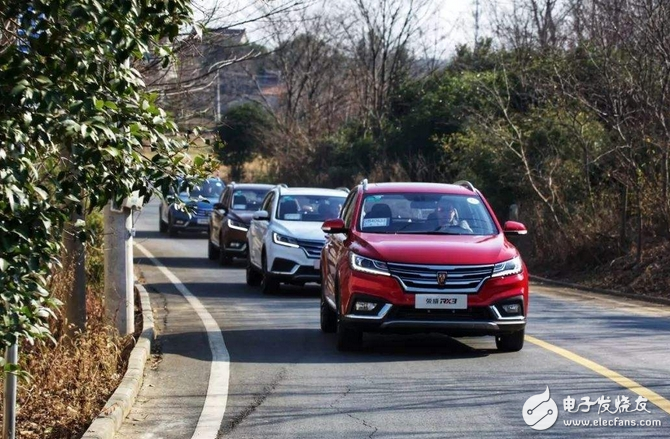
SAIC Roewe Internet car model RX3
The "wheel battle" between BAT has already started, but the progress is slightly different.
Baidu's DuerOS has just landed on the modern car system, and the installed capacity is ten, Tencent's AI in car is in the preparatory stage. In contrast, the zebra Zhixing team that Ali and SAIC have teamed up has already harvested 400,000 installed capacity, and recently launched version 2.0, which has strengthened a large number of in-vehicle core functions.
It is worth mentioning that although Zebra has established cooperation with Shenlong and Ford, the models have not yet been launched. That is to say, the installed capacity of more than 400,000 Zebra Zhixing can be said to come from Roewe, MG and Datong of SAIC. Self-owned brand.
On December 28, 2017, SAIC's star model Roewe RX5 took the lead in launching the air upgrade of Zebra Zhixing 2.0. On January 9, 2018, Roewe RX3 started the upgrade... In the next 4 months, SAIC's nearly 40 Ten thousand Internet car owners can complete the upgrade through the 4G network by simply performing a simple operation check installation package in the car.
“The whole process takes only 15-20 minutes. Moreover, since the OTA upgrade belongs to the Internet basic service, the traffic charges generated by the upgrade are all borne by SAIC.†The product manager of SAIC Roewe told the reporter, “This will be the largest in the world. Internet car online upgrade."
Upgrade is a must, but where is the direction?The industry has already formed a consensus on intelligent networked vehicles. "OTA upgrade capability is the most basic and the most critical standard." Wang Xiaoqiu, general manager of SAIC passenger car, also pointed out at the Hangzhou Yunqi Conference in 2017 that it cannot be connected to the Internet. The upgraded car will become an antique.
Based on AliOS development, Zebra has performed 6 OTA upgrades, and the launch of the 2.0 version has attracted attention in the industry. After all, as an in-vehicle system that is the first to practice and mass production, its every move has realistic reference significance for the industry. So, how do Zebra and SAIC define the direction of OTA upgrade?
Users who have been concerned about the Roewe RX5 should know that this car is known as "online."
That is to be able to replace the mobile phone with online car navigation, to control most of the operation of the vehicle with cloud voice processing, including remotely controlling the vehicle to lock and unlock the phone, opening the trunk to receive the courier, and even driving the vehicle with the mobile phone in the winter and summer seasons. Hot and cold air conditioning, preheating or cooling the interior of the car.
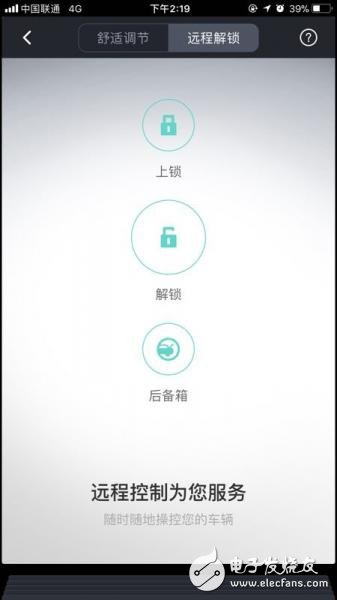
Zebra app's remote control interface
Roewe engineers have described the remote control capabilities of Internet vehicles. "Even if you are abroad, you can use your mobile phone to open the trunk of your vehicle or lock the vehicle."
But it must be said that in the era of mobile Internet, the car carries the interactive experience of mobile devices, which is not a new thing in itself. Therefore, remote connection and control is also the basic function of an Internet car.
The in-vehicle system really needs to solve the problem of human-computer interaction in the car and the core functional experience of the car in the travel scene. Deriving from these two directions, the OTA upgrade direction of the in-vehicle system is the improvement of voice and navigation. Voice makes the car system no longer ash, can become an active traffic portal, and navigation and maps are connected in series to the entire travel scene.
In the upgrade of Internet Car 2.0, SAIC is focusing on these two aspects.
Freeing the hands of the "tough battle"The 2.0 car system is the easiest to improve for the user's senses. Voice input has been upgraded to "coherent voice commands." In the previous version, the user needs to frequently issue a "zebra" command to wake up the voice and then say "navigation to XX".
In the 2.0 version, you can avoid this cumbersome step, just say "zebra, navigate to XX" to open the navigation.
The biggest difference between a machine and a person is that people can understand the situation and automatically lock the target, but the machine can't, so it needs to wake up frequently. This improvement of Zebra 2.0 has undoubtedly greatly increased the ease of use of voice control in the car, making voice manipulation closer to the natural experience.
In addition, Internet Car 2.0 also focuses on improving voice control permissions. In the 1.0 era, the Internet in-vehicle system only designed the filter for the main driver's seat, so the voice control authority is mainly in the hands of the driver, while the 2.0 version also has the authority to open the driver's seat. In order to avoid confusion, cross-control is not allowed, that is, who is awakened by "Zebra Zhixing", who will complete the next voice control until the execution of a set of commands is completed, and then the second voice is involved.
The field staff said that the upgrade of the above functions was completely implemented by software upgrade, and there was no modification of any hardware modules. This is also due to the fact that in Zebra Zhixing 2.0, SAIC will replace the voice interaction technology with its original Nuance with its own technology.
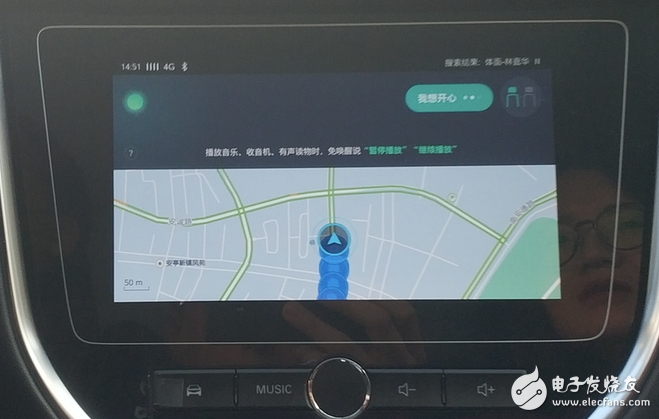
There is a very interesting detail. During the experience, the reporter said the "I want to see the stars" command, the normal feedback of the vehicle is to open the sunroof. But in one of the experiences, the car screen showed the command "I want to see the stars" as "I want to be happy."
However, the vehicle still performs the action of opening the sunroof instead of playing a paragraph. This also shows that after Ali uses his own voice technology, although the voice text conversion on the car side is wrong, the cloud voice algorithm can correctly understand the voice semantics.
In addition, Internet Car 2.0 has added more contextual voice features, such as saying "I want to smoke", the window will automatically open a seam.
It is understood that in the future of SAIC's Internet car, the voice system will perform faster iterations, realize voiceprint recognition, and give personalized response to each person's data record.
How to start a trip that says "go and go"?As mentioned above, speech is an intelligent interaction that activates the in-vehicle system. As a travel tool, cars are used in various life and work situations such as travel and commuting. Providing precise scene services based on maps and navigation is the fundamental meaning of intelligent car.
Zebra Network CEO once told reporters that the reason why the "map is the desktop" concept is precisely because when people enter the mobile space of the car, the primary need is to determine their relative position with the surrounding, so maps and navigation have become The focus of Internet Car 2.0 is upgrading.
Internet Car 2.0 is the first to add a “journey†function based on daily travel. The idea behind this function is to use the car with networking and LBS characteristics as the core entrance for users.
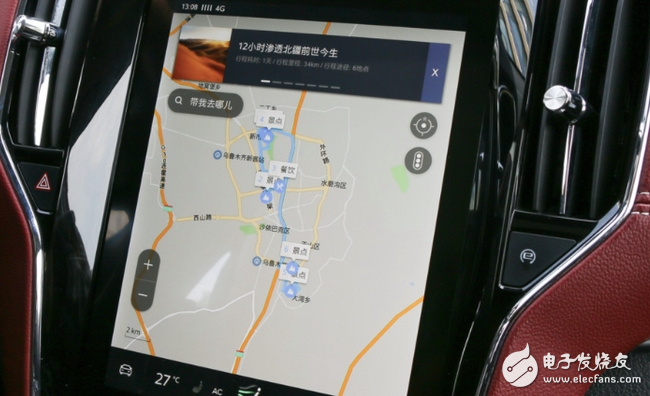
In the journey function, after the user enters the destination in the navigation, the system will provide a variety of different routes, self-driving travel packages of different lengths of time, and display information such as catering and business super-sale along the route. When the user arrives at the destination, the Internet car will push the corresponding service window according to the scenic spots, restaurants and supermarkets along the way.
For example, when driving to a nearby shopping mall at a meal, the system will intelligently recommend nearby food and beverage outlets, make reservations and payments through vehicles, pay for access to Alipay, and dining information from word of mouth.
It is understood that these windows are generally pushed 5 minutes before the route is cut in, and only stay on the interface for about 10 seconds, which not only ensures that the user will not bring security risks due to the emergency change of the route, nor will it block the driving interface.
Of course, the Internet Car 2.0 is equipped with an adaptive map. The map scale can be adjusted automatically with the speed of the car. For example, at 30km/h, the vehicle will think that you need to bend or pass the ramp, the map will be automatically enlarged, and the navigation will be more For clarity.
If you have booked your meal information through your car, you can view the relevant order in your personal center.
In addition, Internet Car 2.0 also demonstrates the self-learning capabilities of the Alibaba Cloud Integrated Architecture. E.g,
· For some regular destinations, the system will also automatically record and display the map as a small color icon;
· When the user is driving in bad weather or driving long distances, the system will automatically push a small amount of UBI scene insurance according to the road conditions or driving conditions. This service is provided by Ant Financial.
· Similarly, when the vehicle encounters a fault, the Internet vehicle system will also push nearby repair points. This service resource comes from SAIC's car.

Of course, the above functions cover daily peer-to-peer travel. Another highlight of Internet Car 2.0 is the “road book†feature for long-distance self-driving tour.
If the daily travel is more efficient, and the demand for the surrounding services is still selective, then the "road book" function in the collection of attractions, routes, hotels, can be said to be closer to the long-distance self-driving needs.
Before the user decided to travel by car, he needed to go online to do a travel guide and book a hotel.
Now, in the upgraded Internet car system, the data of the "poor travel assistant" has been accessed. In other words, there will be a lot of road books pre-stored. These road books will have detailed route planning and attraction introduction. Users can directly book hotels in the road book through Alipay, reserve catering services, and purchase scenic spot tickets.
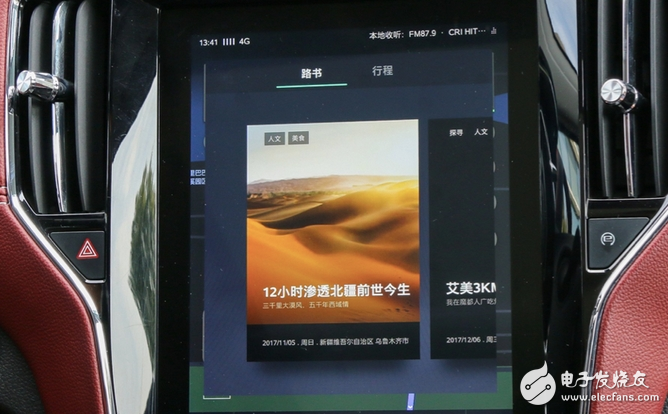
It is understood that the road resources in the car system will be enriched by PGC and UGC, including:
· The platform operator uploads a new road book by itself;
· The platform is self-accepted for popular attractions and dining spots along the way;
· Users upload their own travel routes. After all, in the newly upgraded Internet car, an intelligent hardware certification platform has been added to allow owners to add certified smart cameras, drones, driving recorders and other intelligent hardware. Record travel moments more easily. The system will call the photo recorded by the owner to help the user automatically generate a road book for self-driving tour.
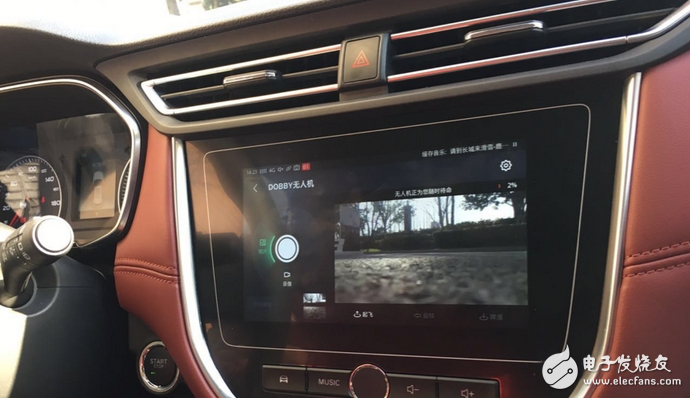
Internet cars are shooting landscapes through drones
In addition to improving the services in the journey scene, for the parking, Internet Car 2.0 also incorporates practical functions such as smart push and destination navigation for the destination parking lot. When the user drives the vehicle to the destination, when the distance is about 3 kilometers from the destination, the system will automatically push the three parking lots around the destination for the user to select. When the customer chooses any one of them, as long as the vehicle speed is less than 20km/h within 500 meters from the parking lot, the map will start the end navigation function and navigate directly to the parking lot.
In addition, it has been learned that with the improvement of infrastructure, services such as automatic toll collection and fast delivery of gas stations through Internet vehicles will keep pace. After all, by cooperating with ETCP, SAIC’s Internet car has already realized self-service payment for most parking lots.
to sum up:In the night of 2018CES, He Xiaopeng, one of the representatives of the new car power, has publicly stated that there are many cool features that can be realized, but what is the significance of landing in the car scene? The most commonly used functions in the car cockpit are nothing more than interaction and navigation.
It is also based on this that Ali has invested in the development and use of its own voice technology, and has carried out a large number of personalized customization based on the map data of Gaode. From the layout of the other two BTs, Baidu uses DuerOS as the key link, and the whole car service is connected in series. It is the entrance status of the voice. Tencent is no exception. It is carried out by small micro voice and jingle voice. Bet.
Therefore, in the choice of strategic direction, Ali has undoubtedly possessed a certain forward-looking nature, and SAIC, as its first group of landing partners, provided the best model for the practice and landing of Internet vehicles with its manufacturing capabilities and open mind. In the wave of automotive intelligent network integration, it is at the forefront.
There may be no avant-garde technology such as radical gull-wing doors, eye-catching biometrics, etc., but I have to admit that it is almost impossible to find the second in the current industry, so that the car space becomes so stable in a stable, easy-to-use and intimate way. Very interesting.
China leading manufacturers and suppliers of Single-Element Detector
Single-Element Detector,Hortwave Detector Unit,Swir Infrared Detector,Swir Ingaas Unit Detector
Ningbo NaXin Perception Intelligent Technology CO., Ltd. , https://www.nicswir.com